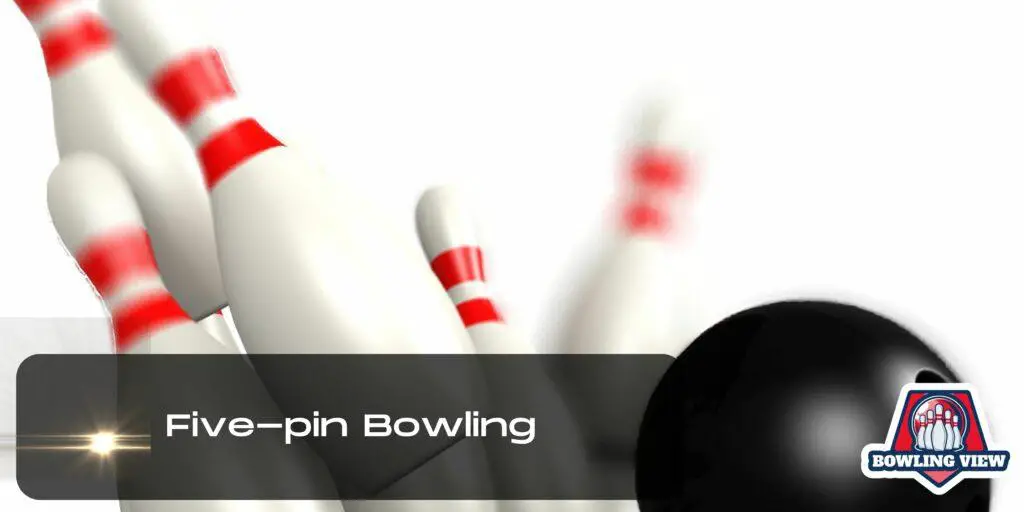Bowling is a popular recreational activity and sport enjoyed by millions worldwide. At the heart of the game lies the interaction between the bowling ball and the pins. These pins, crafted to withstand numerous impacts from heavy bowling balls, might appear nearly indestructible but have you ever wondered if they wear out and break over time?
When addressing the question of ‘Do Bowling Pins Wear Out and Break?’, it’s essential to understand their composition. They are generally made from hard maple wood or synthetic materials to ensure durability.
Over time, however, even these robust materials can experience wear and tear. Multiple impacts, scuffs, and nicks can accumulate on the pins, eventually weakening their structure. When pins no longer meet regulatory specifications for size, weight, and shape, they must be replaced.
In addition to the visible wear, the internal components of a bowling pin may also degrade. Most pins feature a void within the base which is vital for ensuring proper weight distribution and balance.
With regular impacts from bowling balls, the interior can also become damaged, reducing the pin’s efficacy. As a result, bowling alleys routinely inspect and replace worn-out pins to maintain the integrity of the game.
Types of Bowling Pins
Ten-Pin Bowling
Ten-pin bowling pins are made of hard maple wood or a combination of durable plastic and wood. They weigh around 3.5 pounds (1.6 kg) each and have a height of approximately 15 inches (38 cm). Despite their sturdiness, the constant impact of heavy bowling balls can cause the pins to wear out over time. The wood or plastic might sustain some cracks or splits, but this is usually a gradual process that occurs over many games.
Five-Pin Bowling
Five-pin bowling, primarily played in Canada, features smaller and lighter pins than ten-pin bowling. These pins weigh about 2.2 pounds (1 kg) and are made of hard maple wood.
Similar to ten-pin pins, five-pin pins might show signs of wear and tear over time. However, their smaller size and lighter weight can make them less prone to breakage.
Duckpin Bowling
Duckpin bowling, popular in the United States, uses pins that are considerably smaller and lighter, weighing only around 1.5 pounds (680 grams). These pins are also made of hard maple wood, but their smaller size makes them a bit more susceptible to wear and tear. Like other types of pins, duckpins could develop cracks or lose their coating, but they are generally durable and able to withstand many games.
Candlepin Bowling
Candlepin bowling, mostly played in northeastern United States, uses the thinnest and lightest pins of all. Weighing just 1.25 pounds (567 grams), these unique pins are tall and cylindrical, resembling candles. The slender size of candlepins can cause them to wear out more quickly compared to other bowling pins. Hard maple wood is still the preferred material for these pins, but extra care should be taken to ensure they last as long as possible.
Material and Construction
Maple Wood
Bowling pins are primarily made from maple wood. This type of wood is preferred for its strong, dense, and impact-resistant properties. Maple wood also contributes to the weight and balance of the pin, ensuring its longevity and a consistent performance during play.
The process of creating the pin involves gluing together blocks of maple wood, followed by shaping them into a cylindrical form. The final shape is then refined using a lathe for precision and uniformity across all pins.
Protective Coating
To enhance the durability of bowling pins, a protective coating is applied. This coating is typically made of a durable material such as urethane. The protective coating serves several purposes:
- It shields the maple wood from damage caused by frequent impacts with the ball and other pins.
- It provides a smooth and glossy finish, optimizing the pins’ appearance and performance during play.
- It helps maintain the shape and balance of the pin, preventing warping and other deformations over time.
Rubber and Nylon Parts
In addition to the protective coating and maple wood, pins also contain rubber and nylon parts. These components further enhance the pin’s durability and ensure consistent performance.
- Rubber components, such as the pin’s base, help in absorbing impacts and reducing noise during play. This helps prolong the lifespan of both the bowling pin and the lane’s surface.
- Nylon parts, often used in the pin’s center, provide additional support and stability within the pin’s structure. Nylon is a flexible yet sturdy material, ensuring the pin remains intact and functional even after numerous impacts.
By utilizing maple wood, a protective coating, and rubber and nylon parts, bowling pins are designed to withstand constant use and impact. Each component plays a crucial role in maintaining the pin’s overall integrity, allowing it to withstand wear and breakage over time.
Wear and Tear Factors: Do Bowling Pins Wear Out and Break?
Number of Hits
Wear and tear on bowling pins is primarily caused by the number of hits they endure. On average, it’s estimated that a single pin can withstand up to 6,000 hits before it begins to wear out. The durability of a pin depends on the quality of the materials used in its construction and the manufacturing process. USBC-approved pins are designed with a specific lifespan in mind, offering consistent performance throughout their use.
Bowling Alley Conditions
Bowling alley conditions also play a significant role in the wear and tear of bowling pins. Factors such as moisture levels, temperature, and overall cleanliness can impact the pins’ lifespan.
In general, pins tend to deteriorate faster in dry conditions, as the lack of moisture can lead to cracks and splits. On the other hand, excessive moisture can weaken the pins and make them more prone to breaking under pressure. Keeping the bowling alley well-maintained and at the proper humidity levels can help extend the life of the pins.
Maintenance and Care
Proper maintenance and care of bowling pins are essential for ensuring their longevity. This includes regular inspection for damage, cracks, and wear. When pins do begin to show signs of wear, it’s important to retire them from use to avoid potential safety hazards on the lanes.
- Rotating pins in different positions within the pinsetter can help distribute the wear more evenly across the entire set
- Cleaning pins regularly can remove dirt, oil, and debris that may accelerate the wear and tear process
- Storing pins in a climate-controlled environment can help maintain the integrity of the materials
By taking these factors into account, bowling alleys can provide a safe and enjoyable environment for bowlers while extending the lifespan of their pins. Proper maintenance, attention to environmental conditions, and using high-quality pins are all ways to minimize wear and tear on bowling pins.
Signs of Wear and Replacement
Bowling pins can indeed wear out and break over time. In this section, we will discuss the telltale signs that indicate it’s time to replace your worn-out pins. We will cover three primary aspects: cracks and splits, excessively worn surfaces, and sound and pressure changes.
Cracks and Splits
As they are continuously being knocked down by heavy bowling balls, it’s quite normal for bowling pins to develop cracks and splits on their exterior. This type of damage compromises the structural integrity of the pins, which can result in poor performance during gameplay. If you notice cracks or splits that are larger than a hairline or run deep into the pin, it is time to retire those pins and replace them with new ones.
Excessively Worn Surfaces
With time and continuous use, the surfaces of bowling pins also become worn out. This wear can manifest as a loss of the pin’s original shape and smoothness. Used pins with excessively worn surfaces may not sit properly on the lane, which could affect how they react when they collide with a bowling ball. To maintain a quality game experience, it is important to replace pins with overly worn surfaces.
Sound and Pressure Changes
Another sign that a bowling pin may be approaching the end of its lifespan is changes in the sounds they make when struck by a ball or changes in the pressure they can withstand.
Over time, pins may start to produce a different, duller sound upon impact, which can indicate that their internal structure has weakened.
Additionally, pins that have suffered internal damage may not be able to withstand as much pressure, making them more susceptible to breaking. Pay attention to the sound and pressure changes in your pins to help determine when it is necessary to replace them.
By carefully monitoring the condition of the pins as detailed in the above sub-sections, it is possible to maintain optimal gameplay and ensure the longevity of the equipment. Replacing damaged or worn bowling pins when needed is an essential aspect of maintaining a high-quality bowling experience.
Bowling Pin Recycling and Uses
The question ‘Do Bowling Pins Wear Out and Break?’ is indeed accurate. Bowling pins do wear out and break eventually. When this happens, there are several ways to recycle and reuse them. This section covers three main uses for old bowling pins, including their transformation into artwork and decor, use in target practice, and reselling on eBay.
Artwork and Decor
Bowling pins can be repurposed as unique pieces of artwork or as decorative items. Artists often paint or embellish bowling pins to create one-of-a-kind sculptures or home accents. Bowling alleys may also use these repurposed pins as wall decorations, adding a touch of nostalgia and interest to their spaces.
Bowling Pin Shooting Target Practice
Old bowling pins make excellent targets for shooting practice. They have a sturdy construction, which allows them to withstand multiple rounds of gunfire. Furthermore, their unique shape and size make them challenging targets, providing an engaging and enjoyable experience for shooters.
Some popular ways to use bowling pins for target practice include:
- Setting them up on a shooting range or in a safe outdoor area
- Hanging them from a target stand, allowing the pins to swing when hit
- Incorporating them into shooting competitions or games among friends
Reselling on eBay
There is a demand for used bowling pins on platforms like eBay, where collectors and enthusiasts seek them out for various purposes. Some people are particularly interested in purchasing pins from specific brands or eras, while others may look for pins with unique designs or markings.
When listing bowling pins on eBay, sellers should consider providing clear and accurate descriptions of the pins, including their condition, brand, and any distinguishing features. This will help potential buyers determine the pin’s worth and make informed purchasing decisions.
In conclusion, old and worn-out bowling pins can still be valuable in several ways. By giving them new life through recycling and repurposing, they can serve as functional or decorative items while also reducing waste.



